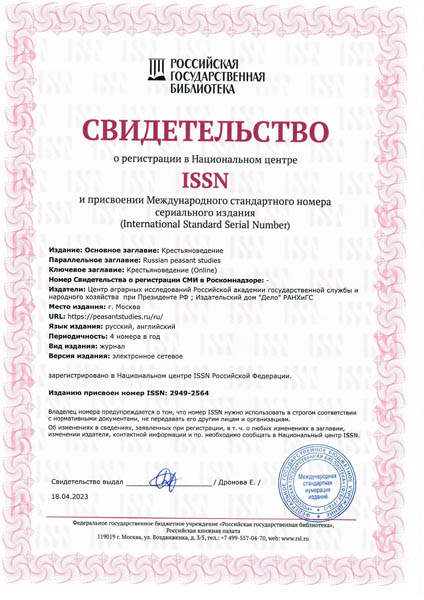Averkieva K.V. Symbiosis of agriculture and forestry on the early-developed periphery of the Non-Black Earth Region: The case of the Tarnogsky district of the Vologda Region // The Russian Peasant Studies. 2017. V.2. №4. P. 86-106.
DOI: 10.22394/2500-1809-2017-2-4-86-106
Annotation
The article considers the social-economic structure of the Tarnogsky district of the Vologda Region, which has a peripheral position in both European Russia and the region. Its specific features such as the low rate of population decline and the growth of the local economy that is not high compared to other Non-Black Earth regions do not correspond to the centre-periphery logic of the well-developed space adopted in social and economic sciences. There is a highly developed timber industry including manufacture of a wide range of complex products; eleven agricultural enterprises and creamery that increase production annually, which is a rarity in the peripheral Non-Black Earth region. Such success of the Tarnogsky district is determined by both reasonable regional policies in forestry and agriculture and by personal qualities of the residents, i.e. the social capital. The author argues that the long-term territorial isolation combined with a long history of economic development played an important role in the current situation. Perhaps, the development of stable and close social ties was influenced by the ‘cluster’ (or “nesting”) type of rural settlement, in which “bushes” of 10-15 villages are located in walking distance from each other and separated by forest areas.
Keywords
rural area, periphery, early-developed territory, agriculture, forestry, social capital
About the author
Averkieva Kseniya V., PhD (Geography), Senior Researcher, Institute of Geography, Russian Academy of Sciences, Moscow, 119017, Staromonetny Per., 29.
E-mail: This email address is being protected from spambots. You need JavaScript enabled to view it.


